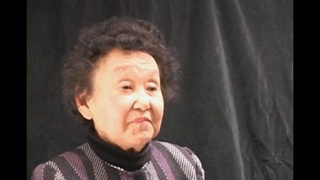Interviews
Developing Art Skills in Camp
She gave me a job which I had to drive teachers who taught at the elementary level school which was located halfway up the hill where the camp was situated. For lunch I’d drive, pick up the teacher, bring them down, and drive them back, et cetera. In the meantime, I hung around the office and I guess I did a certain amount of sketching for personal amusement and she thought it was a nice thing for me to be doing and she was kind enough to take me into the storehouse for school supplies and showed me the section where all the art supplies were and just help yourself to whatever you want. So that’s what I spent an awful lot of time doing, just doing that plus doing this job of driving teachers up and down the hill.
Date: August 6, 1998
Location: California, US
Interviewer: Janice Tanaka
Contributed by: Watase Media Arts Center, Japanese American National Museum









